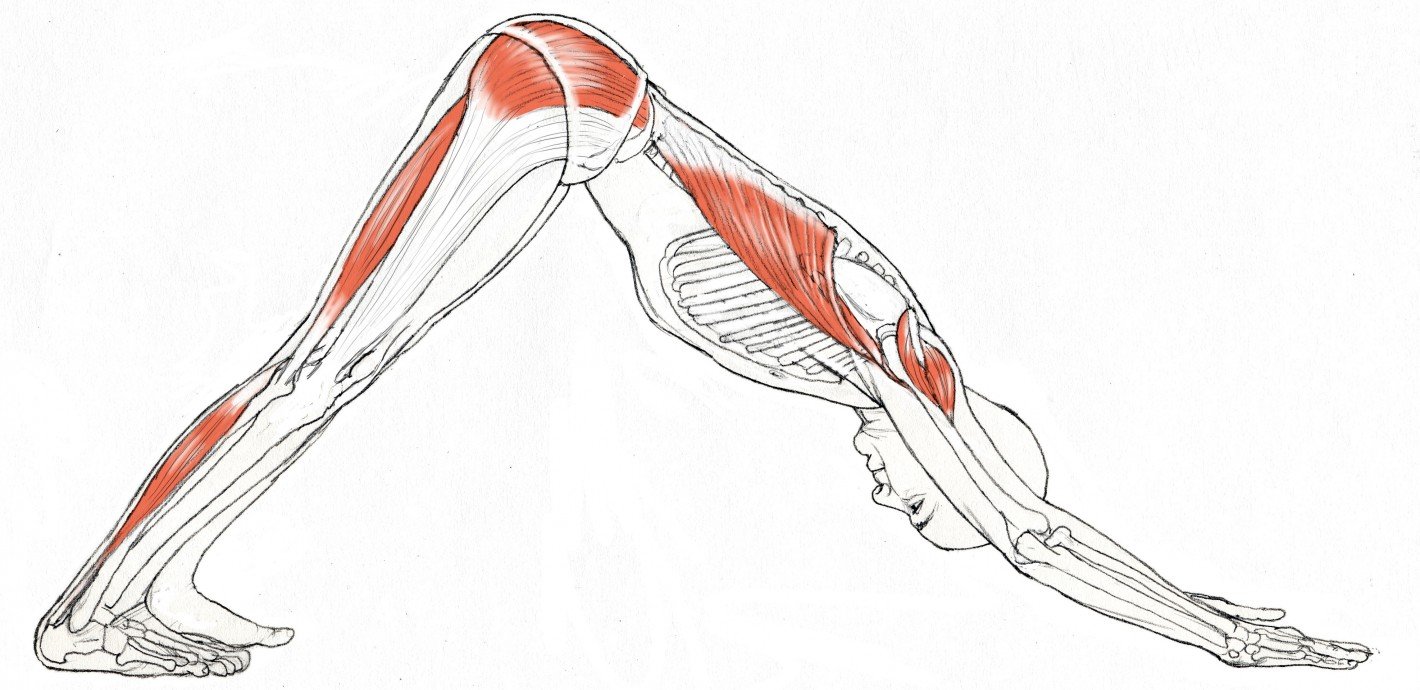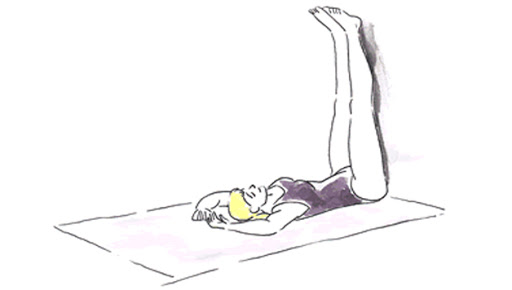
What is yoga and how does it work?
Health Benefits of Yoga – Mental health and physical health
Yoga is an ancient practice, rooted in Indian philosophy and spirituality. The word yoga means union or “to yoke” derived from the Sanskrit word “Yuji”. It began as a spiritual practice but has become popular as a physical and mental outlet to promote holistic health.
It weaves or unifies the mind, body, and spirit together as it highlights the connectedness of the three.
Many different types of yoga exist – Vinyasa, Hatha, Iyengar, Kundalini, Power, Ashtanga, Bikram, Yin, Restorative. Although traditionally, yoga includes other elements such as; breathing techniques (pranayama), meditation (dhyana) as well as physical postures of the body (asana) it was fundamentally different from what we know as ‘the practice’ in today’s modern world.
Modern yoga within the Western world typically emphasizes physical postures, however, it is seen as a mindfulness practice, by creating awareness of body and breathe, rather than a form of exercise. Yoga along with Tai Chi and Chi Gong are sometimes termed as “meditative movement” practices as all three include the element of meditation by linking breathe to movement.
11 Physical Benefits of Yoga
- Improves Flexibility
- Builds Muscle Strength and Improves Muscle Tone
- Improves Balance and Core Strength
- Eases and Prevents Back Pain as well as releases Neck Pain and Release Migraines
- Boosts Heart Health which could prevent Heart Disease – Reduce Blood Pressure and enhances Blood Flow
- Improves Sleep and can aid in reducing Insomnia
- May reduce inflammation and act as a pain relief as it mobilizes the joints in the body and releases muscular tension
- Drains Lymphatic System, Boosts Immunity and Regulates Adrenals
- Aids in Reducing Chronic Conditions and Pain
- Teaches Improved Breathing and Lung Function through Deep Breathing exercises
- Improves General Quality of Life
6 Mental Benefits of Yoga:
- Cultivates mindfulness and awareness of self
- Enhances Mental Clarity, Focus, Calmness, and Stability
- Reduces conditions of Stress, Anxiety, Eating Disorders, and Depression by decreasing levels of Cortisol hormone
- Increases Self-Confidence and Encourages Self-Care
- Connects you with Inner Guidance and a Supportive Community
- Yoga Therapy as a tool to overcome Post-Traumatic Stress Disorder
What does research show about the benefit of yoga relating to overall wellness?
Studies have suggested possible benefits of yoga for several aspects of wellness, some of which include stress management, mental/emotional health, promoting healthy eating/activity habits, sleep, and balance.
Stress management.
Of 17 studies (involving 1,070 total participants) of yoga for stress management included in a recent review, 12 showed improvements in physical or psychological measures related to stress.
Mental/emotional health.
In a recent review of 14 studies (involving 1,084 total participants) that assessed the effects of yoga on positive aspects of mental health, 10 studies found evidence of benefits, such as improvements in resilience or general mental well-being.
Promoting healthy eating/activity habits.
A 2018 survey of young adults (involving 1,820 participants) showed that practicing yoga regularly was associated with better eating, pain prevention, and physical activity habits. In interviews, people who took the survey said they thought yoga supported healthier habits through greater mindfulness, motivation to participate in other forms of activity and eat healthier, and the influence of a health-minded yoga community.
Sleep.
Yoga is helpful for sleep in several studies of cancer patients and older adults and individual studies in other population groups, including people with arthritis, pregnant women, and women with menopause symptoms.
Balance.
Of 15 studies (688 total participants) looking at the effect of yoga on balance in healthy people, 11 showed improvements in at least one outcome related to balance.
Source: nccih.nih.gov
Adding Yoga to Your Life Can Bring Many Health Benefits
Why is it a good idea to incorporate yoga into your daily life? There are many positive effects of yoga. The physical benefit of a yoga practice is well known, but research shows that there are important mental benefits too.
11 Physical Benefits of Yoga

1. Improves Flexibility
A consistent yoga practice can aid in elongating and stretching muscular fibers and mobilizing the joints, as various postures allow the practitioner to tap into the suppleness of the physical body. The use of breathing while moving in and out of the postures allows the body to relax and sink deeper to access this flexibility. This however is not a prerequisite to doing yoga – a common myth that people think to be true when starting yoga and often what many find intimidating.
2. Builds Muscle Strength and Increases Muscle Tone
Along with suppleness strength and muscle tone can be a result of a consistent practice – specifically in styles that call for ‘longer postural holds’ such as Hatha or Ashtanga. It involves the entire body and therefore is also a great way to correct muscular imbalances of any nature.
As it has a strengthening nature it is a practice that is greatly encouraged when rehabilitating injuries as it works with your own body weight in a very gentle way. It allows you to intrinsically build strength with your physical limitations.
3. Improves Balance and Core Strength
Many of the yoga postures challenge the balance and equilibrium of the body this inadvertently builds strength in the core as well as proprioception (how we perceive our bodies in space). As always an important lesson within the mental framework too – finding balance physically to balance out the thoughts.
4. Eases and Prevents Back Pain as well as releases Neck Pain and Release Migraines
Releasing and easing tension is fundamental as the practice of relaxation and ‘releasing/letting go’ is the building block. In our modern lives where most of us sit behind a desk for many hours and lead stressful lives, a lot of tension builds in the neck and back.
5. Boosts Heart Health which could prevent Heart Disease – Reduce Blood Pressure and enhances Blood Flow
This is a result of improvement in blood circulation and an increase in blood flow which many of the poses help with.
Regular yoga practice may reduce levels of stress and body-wide inflammation, contributing to healthier hearts.
Several of the factors contributing to heart disease, including high blood pressure and excess weight, can also be addressed through yoga.
Try it: Downward Dog Pose (Adho Mukha Svanasana): Get on all fours, then tuck your toes under and bring your sitting bones up, so that you make a triangle shape. Keep a slight bend in your knees, while lengthening your spine and tailbone.

6. Improves Sleep and can aid in reducing Insomnia
Research shows that a consistent bedtime yoga routine can help you get in the right mindset and prepare your body to fall asleep and stay asleep. The hormone, Melatonin, which makes us sleepy is greatly enhanced which results in a deeper and more rested sleep.
Try It: Legs-Up-the-Wall Pose (Viparita Karani): Sit with your left side against a wall, then gently turn right and lift your legs to rest against the wall, keeping your back on the floor and your sitting bones close to the wall. You can remain in this position for 5 to 15 minutes.

7. May reduce inflammation and act as a pain relief as it mobilizes the joints in the body and releases muscular tension
8. Drains Lymphatic System, Boosts Immunity and Regulates Adrenals
Yoga has detoxifying properties as it helps the lymphatic system flush out toxins that the body might be holding onto such as inflammation, stress, hormones, or substances that burden the bodily system.
This results in all other systems such as the immune system (helps with fighting infections) and adrenals function optimally as the body has fewer stressors to deal with. This maintains the nervous systems as well and allows all these systems to communicate effectively with each other to find homeostasis (balance) in the body.
The stress hormone, Cortisol, also is kept in check. Excessive cortisol has been linked with major depression, osteoporosis (it extracts calcium and other minerals from bones and interferes with the laying down of new bone), high blood pressure, and insulin resistance. In rats, high cortisol levels lead to what researchers call “food-seeking behavior” (the kind that drives you to eat when you’re upset, angry, or stressed). The body takes those extra calories and distributes them as fat in the abdomen, contributing to weight gain and the risk of diabetes and heart attack.
9. Aids in Reducing Chronic Conditions and Pain
Chronic symptoms such as arthritis, asthma, and Multiple Sclerosis (MS) can be relieved as it mobilizes and relaxes the entire bodily system.
10. Teaches Improved Breathing and Lung Function through Deep Breathing exercises
The connection and awareness of breath are one of the pillars of Yoga. Known as Pranayama, the breathe is seen as a vital life force or energy situated in the body and this is also considered to be one of the ‘8 limbs of Yoga’ according to the ‘Yoga Sutra’s of Patanjali’.
Bringing awareness to our breath brings us into the present moment and allows us to be a lot more conscious of our bodies and minds which results in how we show up in our everyday lives.
Practicing breath-work consistently increases our lung capacity and invites fresh oxygenated air into our bodies which allows our bodies to function more efficiently. We learn to build this life force within which rejuvenates, refreshes, and energizes our cells and Being.
Yogis tend to take fewer breaths of greater volume, which is both calming and more efficient. A 1998 study published in The Lancet taught a yogic technique known as “complete breathing” to people with lung problems due to congestive heart failure. After one month, their average respiratory rate decreased from 13.4 breaths per minute to 7.6. Meanwhile, their exercise capacity increased significantly, as did the oxygen saturation of their blood. Also, yoga has been shown to improve various measures of lung function, including the maximum volume of the breath and the efficiency of the exhalation. (yogajournal.com)
11. Improves General Quality of Life
The nature and qualities of Yoga are therapeutic through its meditative practices of consciousness and bringing awareness to being mindful. It is therefore commonly used adjunct to conventional therapy. Yoga is not aimed at replacing therapy, however. More energy and brighter moods are also a result, as feel-good chemicals such as GABA, serotonin, and dopamine (our ‘happy hormone’) increase which are responsible for feelings of relaxation and contentedness.
One study followed women with breast cancer undergoing chemotherapy. Yoga decreased symptoms of chemotherapy, such as nausea and vomiting, while also improving the overall quality of life ( A similar study looked at how eight weeks of yoga affected women with breast cancer. At the end of the study, the women had less pain and fatigue with improvements in levels of invigoration, acceptance, and relaxation ( Other studies have found that yoga may help improve sleep quality, enhance spiritual well-being, improve social function and reduce symptoms of anxiety and depression in patients with cancer ( studies show that yoga could improve quality of life and may be used as an adjunct therapy for some conditions. (healthline.com)
Mental Benefits of Yoga:

Although a lot of attention is given to the physicality of Yoga, the teachings of the mind and the shifting of mindset is where the real magic happens. Historically, the first Yogis saw the practice as a path to ‘spiritual enlightenment’ it was a mental journey rather than a physical journey and is therefore deeply rooted in ‘spiritualism’.
1. Cultivates mindfulness and awareness of self
By tuning into our inner landscapes and becoming aware of our feelings, thoughts, and breathe we start to shift the seat of consciousness. Yoga teaches us to therefore act from an active state rather than a reactive state. We learn to be aware of a situation, assess the situation, and act accordingly rather than reacting impulsively.
This results in how we regulate our emotions and how we show up in our relationships with ourselves and others. ‘The Self’ in Yoga is separate from our thoughts, our actions, feelings, our body, or even what we do in this world and it guides us to start asking ourselves questions on the path of self-discovery. “Who are we and how do we reach this higher state of living our truth?” We learn to take life as it comes ad let go of the perceived plan we might have.
2. Enhances Mental Clarity, Focus, Calmness, and Stability
“An important component of yoga is focusing on the present. Studies have found that regular yoga practice improves coordination, reaction time, memory, and even IQ scores. People who practice Transcendental Meditation demonstrate the ability to solve problems and acquire and recall information better probably because they’re less distracted by their thoughts, which can play over and over like an endless tape loop.”
The teachings of Yoga focuses on detaching from our mental states and adopt the idea of “I am not my thoughts” to bring about a clear mind and tap into a blissful state. It reorganizes our thoughts and rewires our brain to allow us to make clear decisions, as it brings us into the present moment, rather than worrying about the future or fretting about the past.
It practices noticing what we are thinking, from an outer perspective, without actually getting involved or clinging to what it means. Nothing is right or wrong, it simply just is and this changes our perceptions of many aspects of our lives as it allows us to gain clarity from different angles and act accordingly.
3. Reduces conditions of Stress, Anxiety, Eating Disorders, and Depression by decreasing levels of Cortisol hormone
As mentioned before high levels of Cortisol is a problem in our rushed, modern lives. Not only does this wreak havoc on our physical bodies but also our mental well-being. Anxiety, depression, and other mental conditions can derive from highly strung and stressed lives. Yoga manages stress by dropping Cortisol and brings us into balance by easing the mind and relaxing the body.
Try It: Corpse Pose (Savasana) Lie down with your limbs gently stretched out, away from the body, with your palms facing up. Try to clear your mind while breathing deeply. You can hold this pose for 5 to 15 minutes.
4. Increases Self-Confidence and Encourages Self-Care
“In much of conventional medicine, most patients are passive recipients of care. In yoga, it’s what you do for yourself that matters. Yoga gives you the tools to help you change, and you might start to feel better the first time you try practicing. You may also notice that the more you commit to practice, the more you benefit.
This results in three things: You get involved in your own care, you discover that your involvement gives you the power to effect change, and seeing that you can effect change gives you hope. And hope itself can be healing.”
Self-esteem is an issue that manifests for most people in this day and age. Yoga allows us to build ourselves up through its empowering practice. It gives us the inner strength that has been depleted by others or ourselves through judgments, pressures, expectations, and projections of how or what we ‘should be.
We let go of these notions of ‘shoulds’, we tap into and learn to build our intuition, and start to experience feelings of gratitude, empathy, and forgiveness, as well as a sense that we’re part of something bigger. While better health is not the goal of spirituality, it’s often a by-product, as documented by repeated scientific studies.
It builds awareness of transformation and increases feelings of compassion and interconnectedness towards self and others by calming the nervous system and remaining steady in the face of unsettling situations.
5. Connects you with Inner Guidance and a Supportive Community

We know that love, compassion, and connection are the basis for our survival as humans. Community is therefore of utmost importance – specifically a like-minded community which might endure the same struggles. It provides a space of understanding and support without attached judgments. This results in discovering your personal growth and worth through sharing it with others.
“Karma yoga (service to others) is integral to yogic philosophy. And while you may not be inclined to serve others, your health might improve if you do. Serving others can give meaning to your life, and your problems may not seem so daunting when you see what other people are dealing with.” (yogajournal.com)
6. Yoga Therapy as a tool to overcome Post-Traumatic Stress Disorder
As stated before Yoga along with Meditation can act as a therapeutic tool and is seen as a healing modality by many but once again, in no way should it replace conventional therapy or medication used for mental illnesses. PTSD and other traumatic events can be worked through and dealt with as the teachings of the practice are rooted in “letting go and surrendering to that which does not serve us”. It creates a channel to tune in and release trauma that the mind or body might be holding onto.
A consistent yoga practice can therefore reap many benefits; whether done as a Yoga class in a studio/online or at home as a ‘self-practice.
Here are links to yoga poses and sequences to try and when one is starting out.
Sources: nccih.nih.gov


